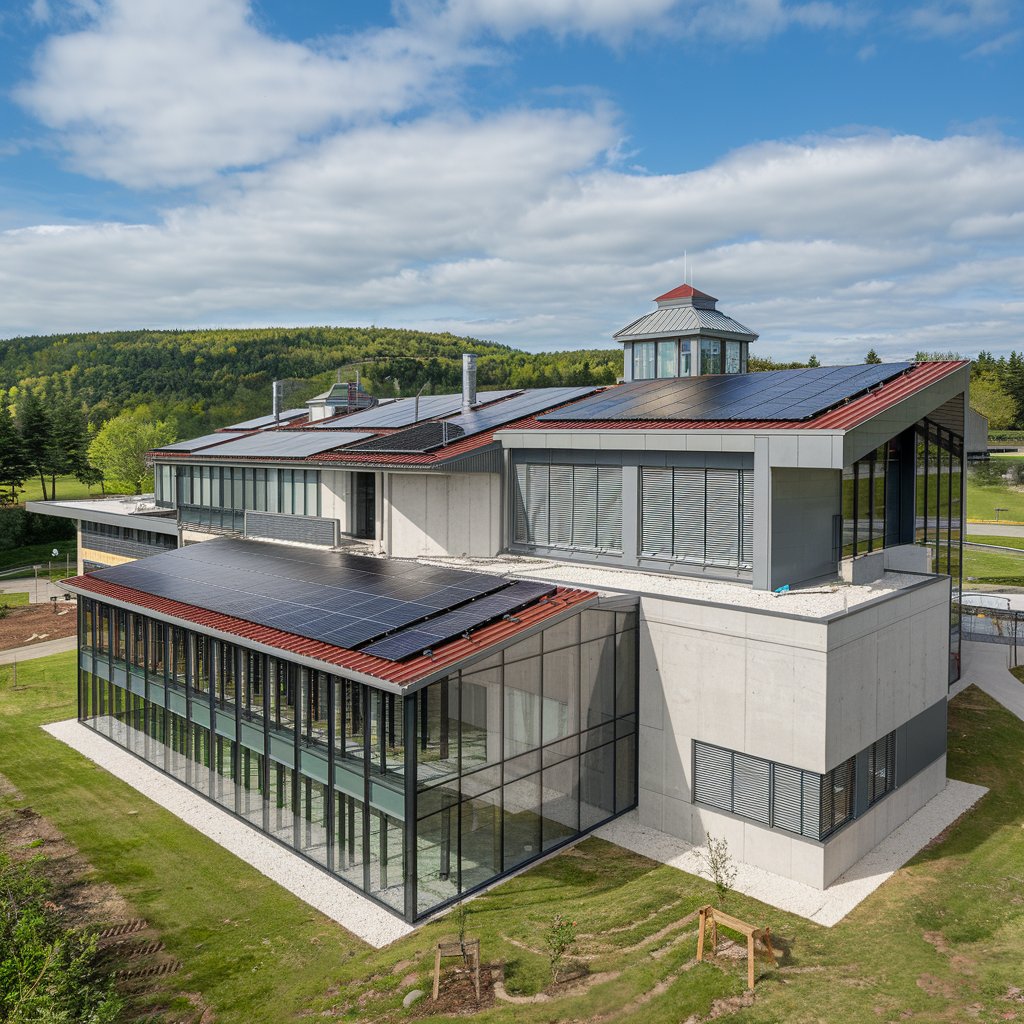BUSINESS
Using Photovoltaic Integrated Construction and Photovoltaic Solutions to Revolutionize Sustainability

A revolutionary approach to sustainable living is represented by the combination of renewable energy technologies and architectural innovations. By transforming buildings from passive shelters into active power generators through photovoltaic integrated construction and photovoltaic solutions, energy usage paradigms are redefined.
Understanding Photovoltaic Integration
Photovoltaic integrated construction within structural frameworks enables structures to double as energy producers. Materials incorporating solar modules form a seamless synergy between design and utility.
Advantages of Photovoltaic Integration
Design Harmony:
Embedded solar panels blend seamlessly with facades, walls, or roofs.
Enhanced Usability:
Structures become dual-purpose, conserving materials while producing power.
Cost Efficiency:
Combines energy generation with structural integrity, reducing overhead.
Environmental Impact:
Generates clean electricity, cutting dependency on nonrenewable sources.
Photovoltaic Solutions Tailored for Efficiency
Tailored photovoltaic strategies encompass installation, monitoring, and optimization services designed to maximize output while aligning with user demands. These customized systems promise versatility across diverse energy landscapes.
Key Features
Smart Designs:
Advanced layouts optimize power collection.
Reliable Outputs:
Systems deliver consistent energy, minimizing fluctuations.
Scalability:
Adaptable configurations accommodate various usage scales.
Minimal Footprint:
Environmentally conscious manufacturing aligns with ecological goals.
Harmonizing Photovoltaic Integration and Solutions
Pairing photovoltaic integrated construction and photovoltaic solution maximizes functionality by merging sustainable energy practices with innovative design approaches.
Impact Highlights
Optimized Energy Production:
Integrated systems harness sunlight effectively.
Streamlined Maintenance:
Sophisticated systems simplify upkeep routines.
Wider Applications:
Usable across residential, industrial, and commercial platforms.
Applications of Photovoltaic Advancements
Residential Spaces
Rooftop systems offer homeowners autonomy over electricity consumption while reducing costs.
Industrial Zones
Factories adopt scalable installations, supporting massive energy needs without grid dependency.
Public Infrastructure
Smart photovoltaic frameworks enrich urban designs, supporting sustainable cities.
Educational Institutions
Solar-integrated buildings teach future generations about eco-friendly alternatives.
Implementation Roadmap
Planning
Identify energy requirements, site conditions, and design constraints.
Installation
Incorporate photovoltaic elements into construction stages.
Monitoring
Use data-driven tools for real-time performance analysis.
Maintenance
Schedule periodic evaluations for sustained efficiency.
Future Prospects
Innovative developments like transparent panels and flexible solar materials promise new horizons. The union of artificial intelligence and photovoltaic systems further revolutionizes this domain, offering unmatched efficiency and predictive analytics.
FAQs
What makes photovoltaic integration different from traditional solar panels?
Integration embeds modules directly into construction elements, enhancing aesthetics and functionality.
Can photovoltaic systems fit into existing buildings?
Retrofitting options allow adaptation without requiring reconstruction.
How do photovoltaic solutions benefit large-scale industries?
Custom configurations cater to vast energy demands, reducing reliance on external suppliers.
Are photovoltaic materials durable?
Built for resilience, these systems withstand weather variations and prolonged exposure.
Do photovoltaic systems contribute to property value?
Energy-efficient features often enhance resale potential.
Can PV systems operate during adverse weather?
Innovative designs optimize performance even under low-light conditions.
How do they affect the environment?
By replacing fossil fuels, these systems contribute to significant emissions reductions.
Are there government incentives for adopting photovoltaic solutions?
Many regions offer subsidies or tax benefits, encouraging adoption.
In Conclusion
Humanity is paving the path for a more environmentally friendly future by adopting photovoltaic integrated construction and photovoltaic solutions. This mutually beneficial relationship between energy efficiency and creative architecture guarantees a sustainable future and allows us to fully utilize the limitless potential of sunlight.











